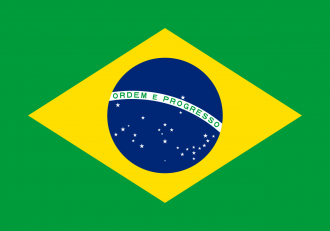Brazil can be characterized as one of the largest world economies, with significant presence in the foreign markets, in fact out-weighting the sum of the other South American economies. Throughout the first decade of the new century, the country made important steps towards the amelioration of its economic environment.
Today, the services sector accounts more than the 65% of total economic activity (2016), employing the majority of the workforce of the country. Major economic contributors to the national GDP include the telecommunications, banking, commerce and energy sectors. In addition, the Industrial sector accounts for 15% of the country’s GDP, with main related fields of specialisation being those of automotive, aircraft, computers, steel and petrochemicals.
Brazil experienced in the 1990s, a significant and extended period of stability and economic growth. The main reasons behind this were the macroeconomic and social policies that the Brazilian authorities adopted. These resulted in the creation of a sort of ‘shield’ for the Brazilian economy, that managed to weather the financial crisis (beginning in 2008) with relatively minor impacts, when compared to other countries, allowing the country to remain the largest economy in South America (2016), the second largest in the Americas, as well as the 9th largest economy in terms of nominal GDP, in 2015. Naturally Brazil is also a member of the G20.
More specifically, over the 2000-2013 period, the Brazilian economy displayed an exceptional growth rate, with only a slight drop in 2009 (-0.1% growth). The country was one of the last to go into recession in 2009, and among the first to resume growth in 2010. To this end, the “Growth Acceleration Program” (PAC) adopted by the Brazilian government in January 2007, has been a major contributor.
For the period 2010-2013, Brazilian GDP, despite the fluctuations, recorded an average growth of 4.1%. However, Brazil’s economy has slowed down significantly in recent years; since 2014, the Brazilian economy has been experiencing the effects of recession, with growth recording a negative growth of 3.8% in 2015 – only the direct and indirect effects of the cut in investments by Petrobras, the public oil producer, are estimated to have shrunk the country’s GDP by 2%. In 2016, the economy shrank by a further 3.6% and is not expected to more than just creep into positive figures, with a projected growth of 0.5%, for 2017.
Finally, as a result of the drop of commodity prices, the delay in adopting significant political reforms, as well as the internal political crisis, have all exposed the structural weaknesses of the country, undermining consumers and investors’ confidence, and leading to the decelerated growth rate in recent years. It is indicative that in 2015, two rating agencies downgraded Brazil’s investment grade ratings, for the first time in seven years.
Since the mid-1990s, the Services sector accounts for the biggest part of the GDP, at some 72.7% in 2015, followed by Industry at 22.3% and Agriculture at 5%. The Brazilian economy is characterized by strong and well-developed agricultural, mining, manufacturing and services sectors, as mentioned above. Among the country’s top exports are iron ores & concentrates (US $36.6 billion exports, in 2016), petroleum oils (crude), soya beans and residues, coffee (31.3% of global production takes place in Brazil), cane or beet sugar, as well as meat and edible offal of poultry, motor cars and aircraft. In terms of imports, wheat and meslin, malt, other vegetables (frozen), wine, olive oil and derivatives, as well as petroleum gases & oils, parts of motor vehicles and motor cars, are major commodities imported by the South American country (2015).
According to the World Bank, Brazil’s top exports’ destinations for 2015, were China (recipient of 18.6% of the total exports), followed by the USA (12.7%), Argentina (6.7%), the Netherlands (5.3%) and Germany (2.7%).
The main exported commodities included soya beans, petroleum oils and oils obtained from bituminou, non-agglomerated iron ores and concentrates, raw cane sugar (in solid form) and oil-cake and other solid residues of soya beans.
According to the World Trade Organisation (WTO), Brazil’s main imports come from European Union (21.4 % of total imports), China (17.9%), followed by the USA (15.6 %) and Argentina (6%).
The main imported commodities consisted in petroleum oils and related items (excluding crude oil), petroleum oils and oils obtained from bituminous, automobiles, monolithic integrated circuits and parts of electrical apparatuses.
On the other side, Brazil has hit historic records of unemployment in recent years. External and internal factors, including the corruption scandal of the Brazilian oil firm Petrobas, contributed to this direction. Estimates indicate that there were about 12 million unemployed people (2016), with youth unemployment exceeding the 20% mark. Rio de Janeiro is the city in the worst situation out of the whole of Brazil.
Brazil experienced particularly large volumes of foreign investment during the 2010-2012 period. However, since 2013, as a result of the macroeconomic and political instability in the country, Brazil has experienced a significant drop in FDI inflows, with the exception of FY 2014.
Despite this recent drop, Brazil remains traditionally the largest recipient of FDI in Latin America. The 2014 World Cup and the 2016 Olympics accelerated infrastructure developments and attracted additional investments to the country. Moreover, the Financial Minister, Mr. Henrique Meirelles, after the Davos World Economic Forum (2017), declared the great interest that investors showed in Brazil, after the reforms undertaken by the government. This was projected according to preliminary estimates to aid in the rise of the GDP by 1% in 2017.

